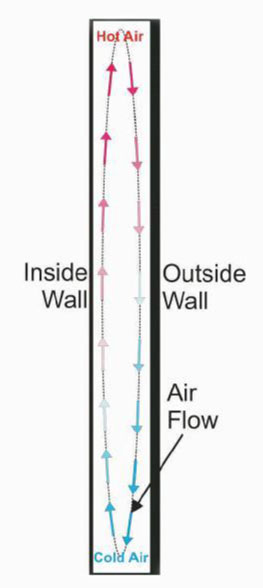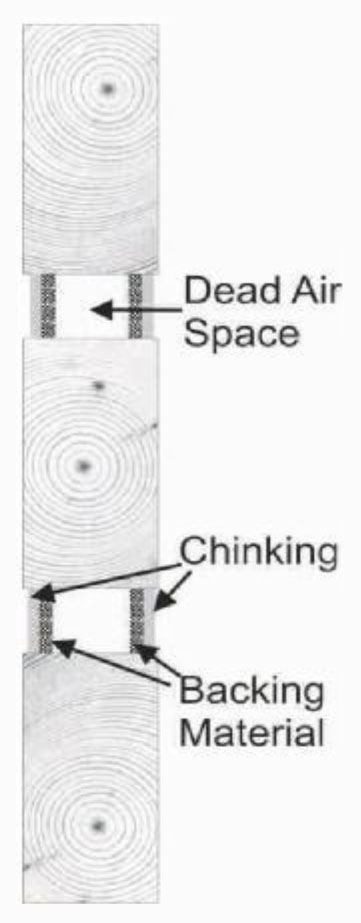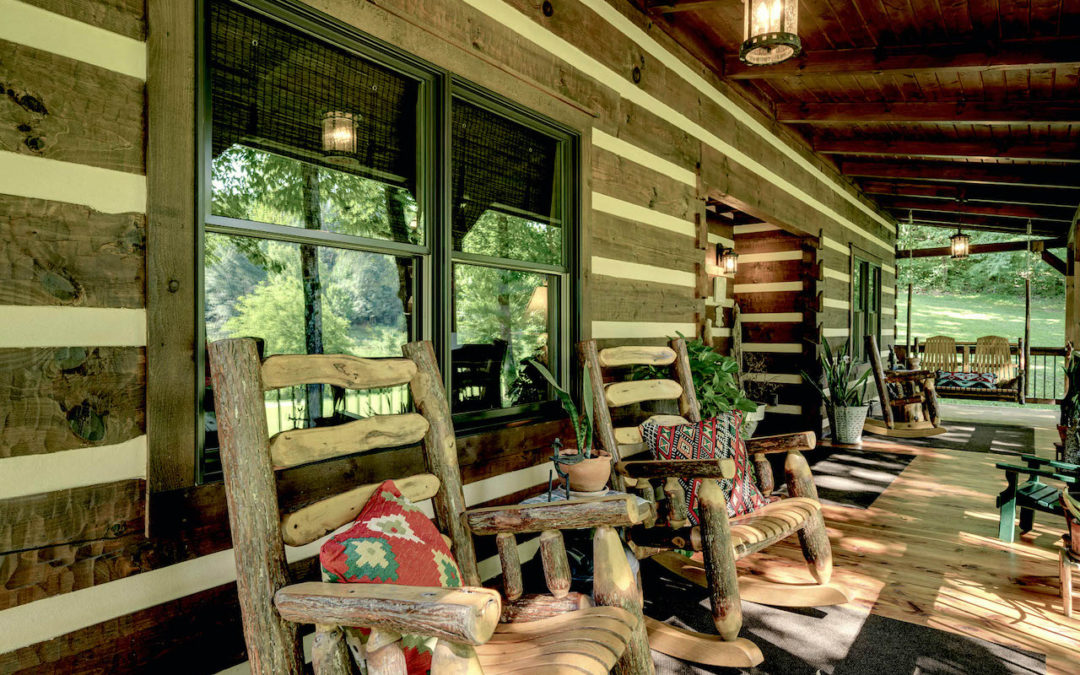In today’s economy energy efficiency is a subject that most people are aware of including log home owners and those people contemplating the purchase of a log home. With this in mind we occasionally get asked about the R-value of our chinking and/or backing materials since many people assume that they provide some insulation value to the exterior walls. In point of fact, neither the Perma-Chink nor the backing material contributes any significant insulation value to a wall. What they do is eliminate outside air infiltration into the home. This has a much greater impact on the overall energy efficiency of a home than adding a minor amount of insulation to a wall.

The next question is what can be used in the void between the exterior and interior chink joints to increase thermal efficiency? Surprisingly, the answer for many situations is nothing. Look at Diagram 1; it is a cross section of a typical stud bay without any insulation in a stick-built home. During the winter the outside wall gets cold while the inside wall stays warm. The air next to the inside wall heats up and rises to the top of the bay. This sets up an air circulation flow where the heat from inside the home ends up warming the outside wall thus increasing the energy usage within the home.
During the summer the circulation flow is reversed and the hot air next to the outside wall ends up warming the inside wall. The objective of placing insulation between the studs is to eliminate this air circulation flow. But what is there in insulation that reduces the conductivity of heat from one side to the other? Surprisingly the answer is air. Air is a very poor thermal conductor. The prime objective in most types of insulation is to entrap air in small cavities, so that it can’t circulate. However, the matrix that holds these small air cavities does conduct heat. Since some insulation matrixes conduct heat better than others, it’s what differentiates the R-value of the various types of insulation like fiberglass, cellulose, styrene foam, etc. But it’s the dead air spaces that do the work.
 When we take a look at the cross section of a chink joint, Diagram 2, what do we see between the exterior and interior backing materials is dead air space. For chink joints less than three inches wide trying to gain thermal efficiency by filling the void between the outer and inner log surfaces is futile and may even be self-defeating.
When we take a look at the cross section of a chink joint, Diagram 2, what do we see between the exterior and interior backing materials is dead air space. For chink joints less than three inches wide trying to gain thermal efficiency by filling the void between the outer and inner log surfaces is futile and may even be self-defeating.
Perhaps if you have a six inch chink joint and live in Alaska it may be worthwhile to insulate this space since it is large enough and temperature difference between the exterior and interior surfaces great enough to start an air circulation flow pattern. But if you live in a moderate climate zone and have a two to three inch chink joint, it’s probably not worth the cost and effort.
This information is provided by Perma Chink Systems. For more information, click here.




